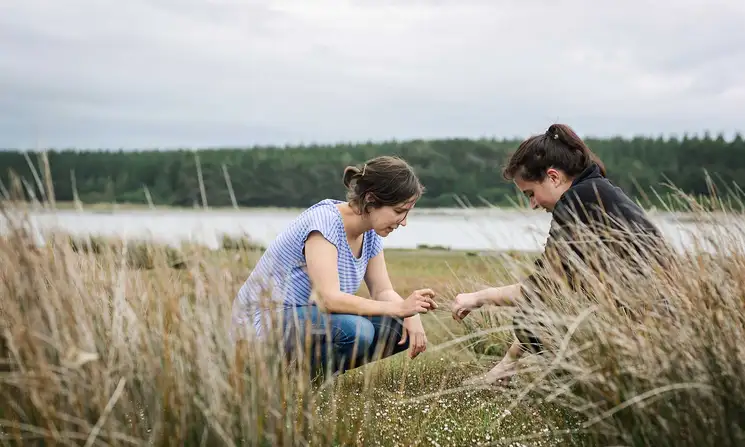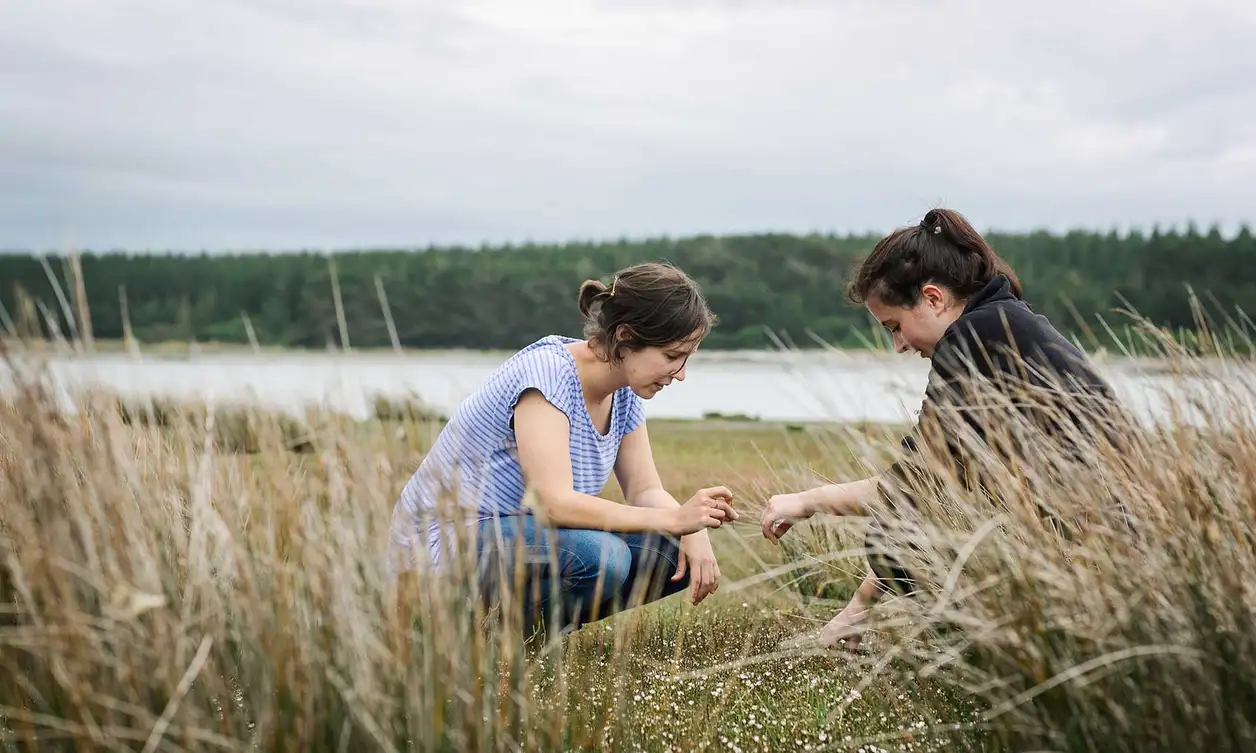
Water use on campus
Massey University measures water use on each campus and participates annually in the Tertiary Education Facilities Management Association’s (TEFMA) benchmarking programme. This monitoring allows the university to analyse water usage over time and compare water usage to that of other universities in New Zealand and Australia.
In 2023, water usage was 444,727 cubic metres. This is a 5.4% increase from the water usage of 422,047 cubic metres in 2022. However, it is very similar, 0.5 percentage points higher, than water usage in 2021 of 442,448 cubic metres.
Water usage is highest on the Manawatū campus due to water use at residential student halls and Massey Farms.
- The Manawatū campus used 401,062 cubic metres in 2023.
- The Albany campus used 22,549 cubic metres in 2023.
- The Wellington campus used 21,116 cubic metres in 2023.
International collaborations and impact
More than half, 53%, of Massey University’s 183 SDG6 Clean Water and Sanitation publications between 2019 and 2023 resulted from international collaborations (Scopus database extracted using SciVal in October 2024).
The publications had almost 2,000 citations, (1,992), with a significant emphasis on research related to water supply, river management, wastewater treatment and water quality.
Water conservation
Recycled water
Sustainable water resources, recycled water from stormwater and run-off, are utilised in specific locations on the university's campuses.
- The new hockey pitch on the Manawatū campus includes 2 30,000-litre water tanks to feed the sprinklers to keep the turf in top condition. The water comes from stormwater and run-off and is topped up from the bore supply.
- The water used to flush the toilets in the Auckland campus library is recycled water. It is collected as run-off water from the hard ground surfaces above and stored in an underground 15,000-litre water tank.
In 2023, an estimated 103,000 litres of non-potable water was captured on-site and stored in tanks for later non-potable use.
New buildings
Massey has committed that all new buildings achieve the '5 Green Star New Zealand Excellence' rating in the 'Green Star' building standard or the equivalent. This standard is a sustainability rating system certified by the Green Building Council Australia.
The rating system is holistic and includes an assessment of water conservation measures during the building’s environmental impact assessment.
Initiatives to conserve water include fitting sensor taps to reduce water wastage in our new buildings – the Veterinary Student Learning Complex and the Post Mortem/Production Animal Hospital facility.
Massey University gardens
The much-admired gardens on the Manawatū campus require a few water conservation measures to keep them looking good while reducing the water used.
- Organic composts, mulch, wetting agents and water retention gels are added to soils to increase their water-holding capacity.
- Verti-draining to ensure deeper plant roots, meaning less watering is required.
- Treegators reduce the amount of water required.
- Watering newly planted trees and rare/exotic species is prioritised during water shortages. The watering of plants is less often but for longer to encourage deep roots.
- Installing automated water systems allows controlled application at night, increasing absorption and reducing evaporation.
Education for local communities
Massey offers popular short courses for local communities to learn about good water management and conservation. Massey’s Farmed Landscapes Research Centre run the courses. These courses include:
- Analysis of New Zealand Agricultural Systems
- Intermediate Freshwater Farm Planning
- Advanced Freshwater Farm Planning.
The Farm Environment Planning courses have attracted more than 4,000 participants, including farmers and other rural professionals.
The courses equip participants with the detailed knowledge and integrated skills necessary to develop New Zealand industry-standard freshwater management plans to improve water quality on farms.
Find out more about agriculture and farming courses
Read more about our water management and conservation courses
What you can do
Water is precious – don’t waste it! We must be all considerate of our water usage to reduce the impacts of overuse on our environment and the risk of drought in the area.
As part of the 'Green Impact' initiative, a recent campaign promoted running full loads and utilising the eco-cycle in dishwashers, sterilisers and instrument cleaning units. Running a full-load cycle can reduce the number of cycles each day and save water.
Here are some easy tips to reduce your water usage.
- Keep your showers to 4 minutes or less.
- Turn off the tap when you brush your teeth.
- Use the half flush on toilets (where possible).
- When rinsing or doing dishes in the sink, use a plug and fill the sink rather than running the tap.
- Ensure that dishwashers only run with a full load.
- Report any leaks to Estates Management.
Water conservation and security research
Water conservation on farms
- Massey researchers are working with local farmers on drainage management techniques, as part of the Tiaki Wai Catchment Solutions project. The project focuses on 2 key techniques: controlled drainage and drainage water recycling.These approaches have the potential to both reduce nitrate leaching from paddocks and to conserve water by reducing the quantity of ground or surface water that is required for irrigation in dry periods. This means that these techniques enhance both the quality and quantity of ground and surface water resources.
- A series of field days and master classes to teach farmers and other rural professionals about controlled drainage and drainage water recycling management systems have been held in 2023 and 2024.
Read more about Drainage water recycling
Read more about Controlled drainage management systems
Find out more about our masterclasses on Innovative Farm Drainage Management Technologies
Water conservation in 1 of the hottest climates in the world
A joint research programme run by Massey and Plant & Food Research is investigating water conservation methodologies in 1 of the hottest climates in the world, the United Arab Emirates (UAE). This research work forms part of a Government-to-Government collaboration between the New Zealand and UAE governments.
Removing phosphorus from wastewater
A team of Massey soil scientists are working with local councils to help remove phosphorus from wastewater using large filters made of soil. The filters will help nutrient levels reach an acceptable environmental standard before discharging the wastewater to waterways.
The 'Palmy' Plastic Pollution Challenge
The 'Palmy' Plastic Pollution Challenge is a long-term project to track and develop solutions for plastic pollution degrading the Manawatū River. As part of the project, Massey staff and students, in collaboration with the Palmerston North City Council, Rangitane o Manawatū, the Manawatū River Leaders Accord, Environment Network Manawatū, and the local community have sampled plastic pollution in different places along the river to create baseline data. This data informs the development of a community-based plastic pollution strategy for Palmerston North City.
Understanding the water use impacts of livestock production and supply chains
An international workshop to advance and harmonise methods and techniques for assessing and reducing the water use impacts of livestock production systems and supply chains, organised by Massey and the Leibniz Institute for Agricultural Engineering and Bioeconomy in 2022.
Drinking fountains and bottle refilling stations
Drinking fountains and bottle-filling stations are freely available for everyone to use in multiple locations on each campus.
The number of water stations was increased by 6 on the Manawatū campus in 2019 to reduce plastic bottle wastage.
The location of bottle filling stations is available on the Massey University app.
Protection of the environment from wastewater and pollution
Massey prioritises environmental protection and the health and safety of people and communities. Adherence to discharge requirements outlined in Section 15 of the Resource Management Act, the National Policy Statement for Freshwater Management 2020 (Feb 2023), regional water standard regulations and associated resource consents is a fundamental commitment.
Wastewater
Wastewater undergoes treatment to meet or exceed the specifications stipulated by resource consents, preventing unauthorised discharge and maintaining prescribed quality standards, including those set out in regional water standard regulations and associated resource consents. In the Manawatū region, these are the Horizons Regional Council One Plan Water Quality Standards.
Adherence is via collection and treatment by local councils. For example, the Palmerston North City Council (PNCC) collects, treats and disposes wastewater from the Manawatū campus.
- The water is treated at the PNCC Wastewater Treatment Plant and includes the removal of phosphorus from the water and ultraviolet disinfection so it doesn’t harm waterways.
- The plant removes most contaminants from the wastewater before it passes through a wetland pond for further treatment in response to Māori cultural concerns.
- During wet weather, aeration lagoons store excess wastewater to ensure that consented discharge limits are not exceeded.
Stormwater and polluted water
The university has established procedures to safeguard stormwater and natural waterways from chemical pollutants from intentional release, accidental spills or organised chemical waste disposal. These procedures include the implementation of Emergency Response Plans that detail appropriate equipment and processes to prevent hazardous substance leakage into the environment.
Treatment methods include wetland soaking, detention and trickle flow, and using filter socks. This multifaceted approach reflects Massey's commitment to environmental responsibility and safety.
Massey's Procedures for Hazardous Substances Disposal and Accidental Release addresses the disposal of hazardous substances – including aligning the university's hazardous substance disposal practices with New Zealand legislation, particularly the Health & Safety at Work (Hazardous Substances) Regulations 2017.
Procedures for Hazardous Substances Disposal and Accidental Release (PDF, 124 KB)
Discharge of the university's stormwater (including polluted water) meets prescribed quality standards, including those in regional water standard regulations and associated resource consents. In the Manawatū region, these are the Horizons Regional Council One Plan Water Quality Standards.








